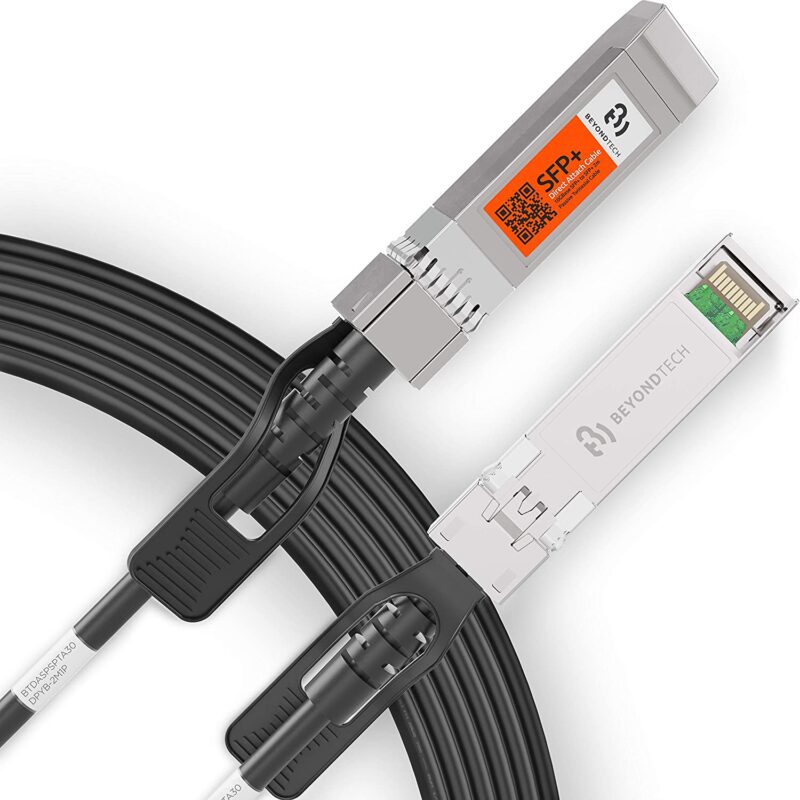Cables, Secure Bridge
Make use of a High-Speed Direct Cable to connect for Data Center Interconnection
Direct attach cable with high speed (DAC) assemblies or Twinax cable assemblies that are used for data centers. It is a less expensive alternative to cabling solutions for high-speed 10G-400G interconnects with optical transceivers. To better understand their capabilities we will walk through some details with regards the which DAC cables are, and what they do to power high-speed data center interconnect.
What is DAC Cable?
What exactly is a DAC cable? Direct attach cable, commonly referred to as DAC cable is a kind of factory terminated Twinax cable that is directly connected to “transceivers” and are supplied in a variety of lengths for small distances as long as 15 meters. These cables comprise pre-determined lengths of shielded copper and fiber optic cable that has permanent pluggable transceivers at one end, with gauges ranging between 24 and 30AWG. DAC cable is able to achieve interconnection of up to 15m using twin axial copper cables, and 100m with active optical cables at 10Gbps, 40Gbps and beyond.
Direct attach cable that is high-speed is classified as Direct Attach Copper cable(DACC) as well as direct active optical cable (DAOC). Check out AOC cables for more detailed details.
DACC cables are active or passive. Passive DAC cable does not contain any electrical components, which means it is able to run at a low power consumption of <0.15w however the connecting distance is limited to 7 meters. However, an active DAC cable has electrical components within the connectors, which can increase the signal strength, allowing larger lengths (5m plus) through copper media and ensuring better quality transmission. Active copper cables are slightly more expensive and draw more energy than direct-attach passive copper cables.
Direct-active optical cable binds to the fiber connector between the transceiver’s ends making a complete fiber cable, similar to direct attach copper cable but with a reach of 15 meters capability, which is a 2x improvement over active DACs limit. The additional features of the ACC will increase its power consumption to 0.5-1.0 W, in average.
Direct Attach Cable in contrast to. Optical Transceiver Module
DAC, AOC cables, and optical transceiver modules can be utilized to connect switches to one another in the process of making a switch or stack to servers or routers. The optical transceiver module requires fiber cables to be connected to the transceiver module and DAC, as well as AOC cables, are fixed cable assemblies, with various connectors that have different forms at both ends. Check out the DAC AOC cable comparison. DAC AOC cables comparison for more details.
Based on the chart, it’s clear that high-speed direct attach cable is less expensive and uses less energy. However, it typically isn’t as long as to a transceiver connected with cabling. Therefore, for any short-range connection that ranges from 5m to 100m, better performance DAC cables provide a more convenient and less expensive solutions. However, if the distance exceeds 100m optical transceivers are suggested.
Power High-Speed Data Center Interconnect
Direct attach cables with high speed come in various configurations connecting both new and older equipment to reduce costs at every connection point. DAC cables are employed in top-of-rack switches with 32 to 56 ports with up to 128 connections (4x25G multiplied by 32 ports). The majority of the time, a higher data rate DAC cable is backward compatible with lower speed DAC Twinax cables. For instance, 10-G-SFP+ DAC cables are backward compatible up to 1 Gb/s.



